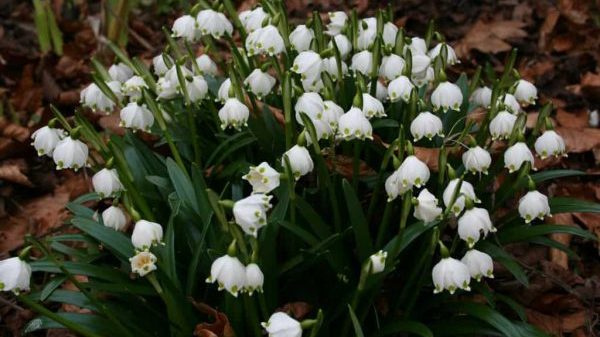Understanding plant names
Why it is important?
There are thousands of thousands of plants out there and not to mention all the man-made cultivars.
Plants can be identified by either a common name or a scientific name.
Common name
So what is a common name of the plant?
Common names for plants are used by people in a given region to describe a particular plant, people from different regions can give the same plant a different name for example
Leucojum aestivum has the common name of snow bells, summer snowflakes, and snowdrops depending on where in the world you come from.
There is no defined way in which to write the common name of a plant.

Scientific name
You’re not expected to know all the scientific names of plants even the most expert gardeners are only familiar with a fraction of the whole plant kingdom. However, it is necessary that we use the same system when it comes to naming plants.
This system was created in 1753 by Carl Linnaeus, a Swedish botanist, everyone assumes that it is a system of Latin names, however this isn’t true Greek names are also used along with Latin names. This is why it’s called the “Scientific name of plants or Botanical name”
The scientific system that he came up with uniquely specified every plant with two or three parts consisting of:
- Genus
- Species
- Sub Species
since he created a system for all natural living things a new fourth part has been created for cultivars – this will describe man-made variations of a plant, one that has been created maybe to increase yield or created to create and attractive garden variety.
Genus
The genus always comes first and it categorises plants with broadly similar characteristics.
Think of this like the make of a car
Species
this is a group of plants within the genus is that have a number of common distinct features.
Think of this as the model of the car
A species can potentially provide us with a lot of information about a plant such as
Where it’s From
- arabica – Arabia
- africanus– Africa
- chinensis– China
- japonica – Japan
- occidentalis– Western
- orientalis– Eastern
- sibirica– Siberia
Its Usual Habitat
- alpinus– Alpine
- aquatica– Water
- campestris– Fields
- montana– Mountains
- pratensis– Meadows
- sylvatica– Forests
How it Grows
- compressa– Compact
- dentata– Toothed
- floribunda – Multi Flowered
- fruticosa– Bushy
- ovalifolium– Oval Leaves
- repens– Creeper
Its Colour
- alba – White
- aureus – Gold
- cardinalis– Red
- cyaneus– Blue
- purpurea– Purple
- nigra – Black
Its Properties or Uses
- edulis– Edible
- oderata– Scented
- officinalis– Medical
- pulcher– Beautiful
How to write plant names
When writing plant names the first two names (Genus , Species) are always in italic with a capital letter just for the first one. Any cultivar after that would be written in quotation marks without italics, for example:
Genus species ‘Cultivar’
Or for a real life example:
Rosa rugosa ‘alba’
Variety – Plants originate in the wild
Rosa rugosa ‘Rubra’
